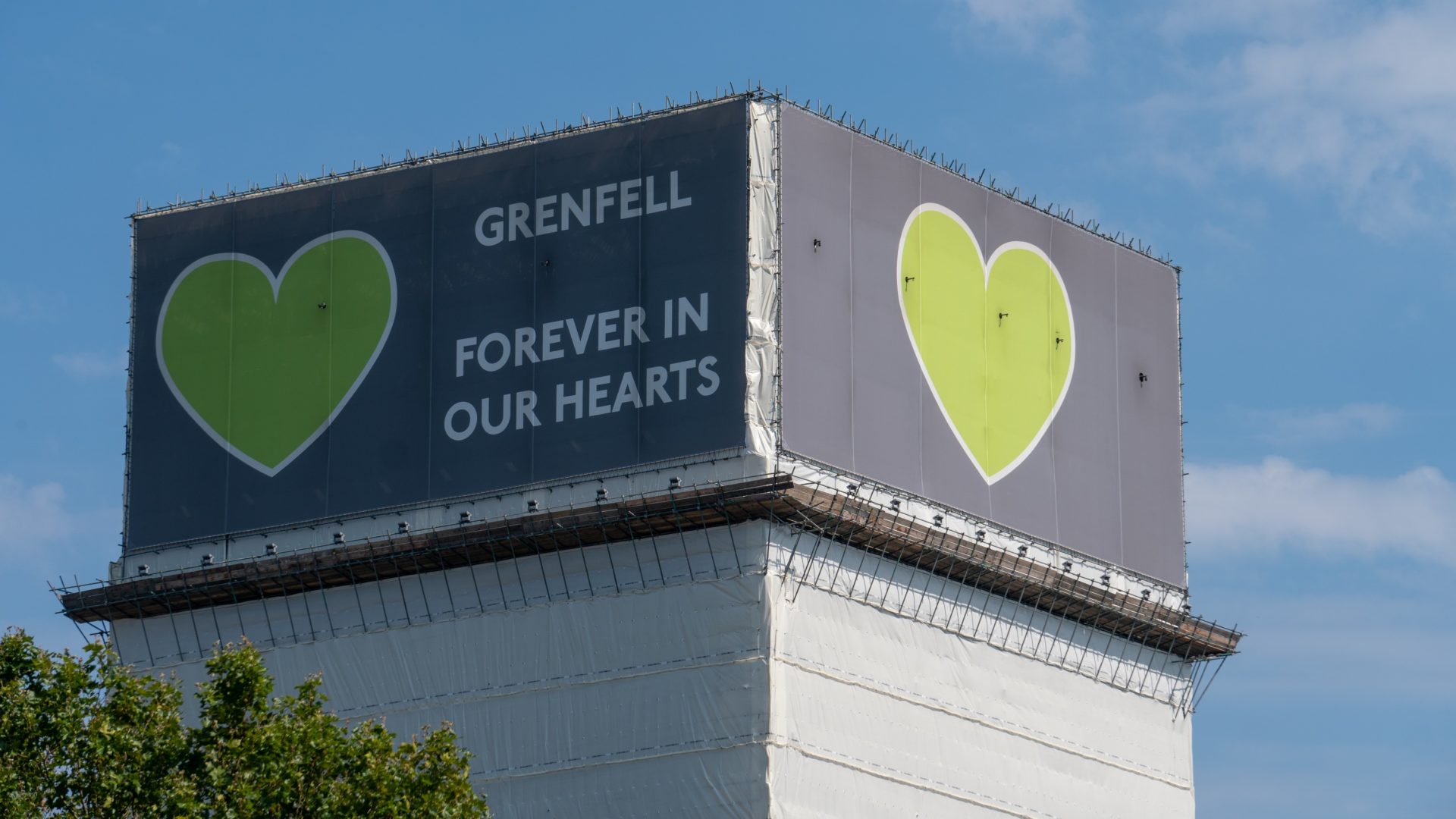
A failure of the regulatory system over decades and the “cynical and cavalier” attitude of cladding and insulation manufacturers were the main causes of the Grenfell Tower tragedy, the barrister for main contractor Rydon has told the Grenfell Tower Inquiry.
Marcus Taverner QC, in his closing submission for modules one and two of phase two of the Inquiry, said: “The culpability of all those involved in the Grenfell Tower project cannot be investigated critically, we respectfully suggest, without the Inquiry first having considered the unfitness for purpose of the regulations and guidelines and their scope for misinterpretation. Nor, in our submission, can the Inquiry ignore the exploitation of that state of affairs by the manufacturers of products used in cladding systems and the assistance given to those manufacturers by the testing houses and the certifying bodies.”
Taverner invited the Inquiry to find that the main cause of the tragedy was “inadequately drafted regulations and guidance” and a “cynical and cavalier approach to the serious risks posed by their products” of the manufacturers of ACM cladding and insulation. He highlighted Dame Judith Hackitt’s interim report into the Grenfell disaster, which said: “Current regulations and guidance are too complex and unclear. This can lead to confusion and misinterpretation in their application to high-rise and complex buildings.”
Taverner added: “It’s also plain that all of this was compounded by a general lack of understanding of the dangers of these products in the UK industry. That these particular factors were the root cause of what happened at Grenfell is evidenced by the fact that the same or similar inappropriate materials have been installed in hundreds of other buildings in the UK and indeed worldwide.”
He continued: “It’s respectfully suggested that the contextual background of any assessment of the conduct of those involved in the design and construction of the cladding works at Grenfell includes, and in our view in a logical order: (1) an inadequate regulatory regime; (2) dishonest manufacturers knowing of that inadequacy, intent on marketing what they knew to be dangerous material for inappropriate use; (3) a slack and complicit testing and certification industry, with the result that materials used in the cladding system were at the very least headlined as appropriate for use above 18 metres when they were not; and (4) poor professional education and dissemination to the right people of reliable information alerting them to the dangers of the use of these products, resulting in an alarming widespread ignorance.”
LABC rejects ‘erroneous assertions’
During the same hearing, Dominic Adamson QC, made a closing submission for Local Authority Building Control, despite the fact that it had had what Adamson terms “only a limited role in this inquiry” so far.
He explained how LABC has operated a registration scheme for products, systems and housing types on behalf of all local authorities since its incorporation but that the scheme was intended as a central register of certified products. He stressed that LABC did not test products in the way that BRE does.
Adamson said: “The service that LABC offered has attracted greater prominence than had perhaps been initially anticipated… Therefore, LABC has had no opportunity to challenge erroneous assertions which have emerged in the evidence. It has allowed some to seek to deflect attention from their own actions by misrepresenting LABC’s role and function. It has allowed others to suggest that LABC certificates were relied upon by those responsible for building control approval of Grenfell Tower when the evidence simply does not support that proposition. LABC’s side of the story has not been heard.”
Adamson said he wanted to highlight two examples. He continued: “David Jones of Herefordshire Council, which was the research authority for Kingspan’s application for approval, has alleged that he was pressured by LABC in respect of the type approval process for K15. This allegation is rejected. It will be recalled that it was Mr Jones who produced the type approval summary which wrongly stated that K15 was a material which could be considered to be of limited combustibility.
“It has been speculated that John Hoban, RBKC’s building control officer, considered the erroneous LABC registration in respect of Celotex’s RS5000 product prior to its use on the Grenfell Tower project. LABC does not accept that he did. Indeed, LABC can demonstrate through the chronology that he could not have considered that material. Unfortunately, these allegations were left unchallenged and/or were perpetuated by questioning of other witnesses who gave evidence to the Inquiry team, such that they have been allowed to gain traction as if they were fact, which they are not.”
The Inquiry continues.
Comments
Comments are closed.












This completely ignores the fact that incorrect installation of Fire Barriers were the reason why the fire was not contained at its source and that this then lead to a chimney effect to spread the fire and increase the heat.